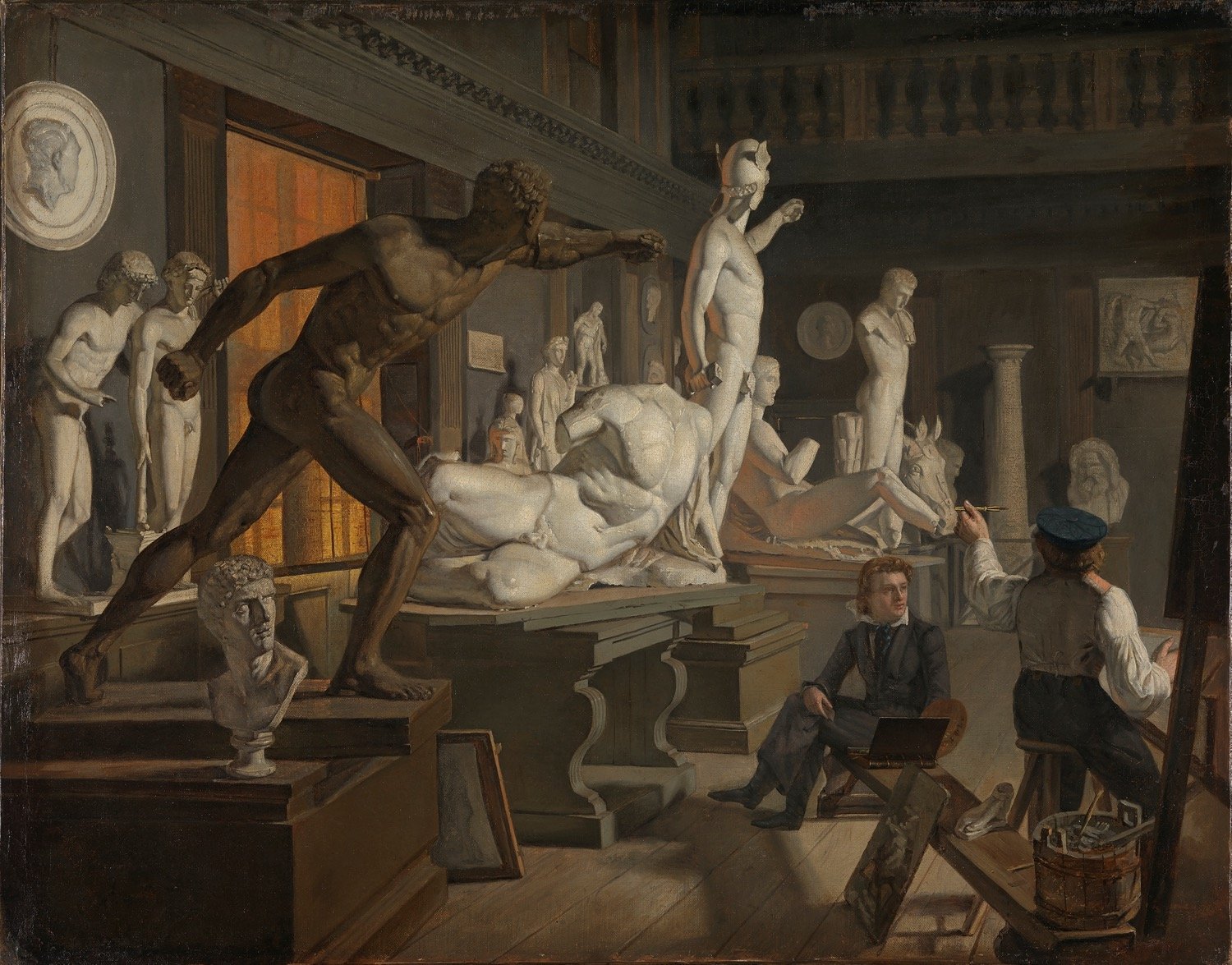Scene from the Academy in Copenhagen
Knud Baade
Transcription
Narrator
The human body has been an important subject for artists through the centuries.
In the past, artists spent many years studying at art academies, where they learned to depict the human body both in movement and at rest.
Here we see the Art Academy in Copenhagen, Denmark, in around 1827.
Two young students are at work, surrounded by plaster casts of iconic historical sculptures.
At that time, art academy students had to negotiate several hurdles before they could call themselves artists. Beneath the ideals these sculptures represent, the two young students we see here perhaps feel as small as they look in Knud Baade's painting.
The students will have completed some preliminary training before being allowed into the cast room. This is where they can learn from the artists of the past. The ripple of muscles, the direction of gaze, the tipping point between standing still and moving forward – how does one capture all of this?
The students can rotate the sculptures, which are resting on boards on top of plinths. How do the shadows fall when the sculpture is seen from a different angle? Just move the board slightly to find out.
For the more advanced students, living models was the thing. Usually, they would draw a male model, who stood completely still while the students drew diligently in the lamplight.